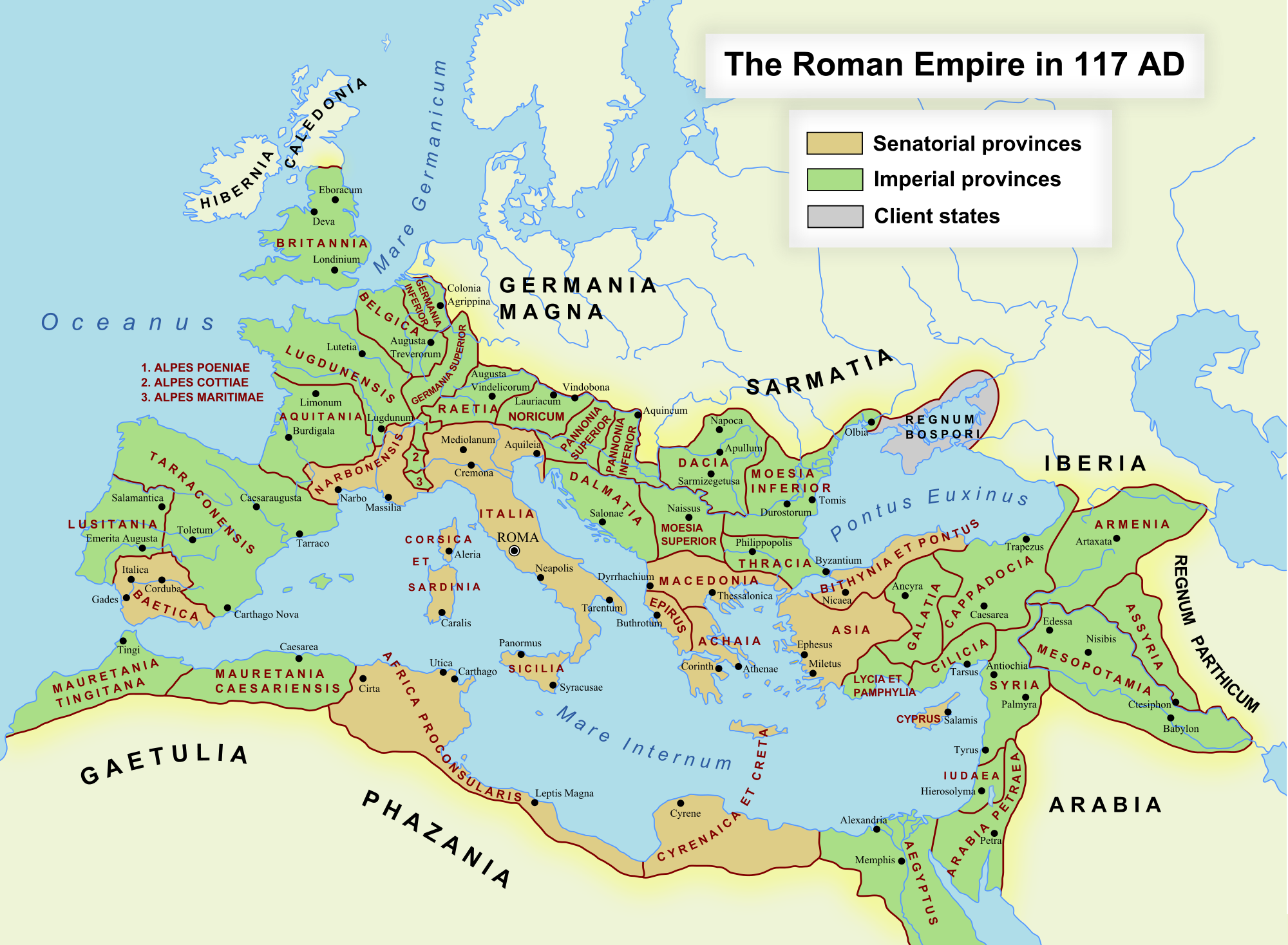(1) Roman Empire at its height, 117 AD.
Due to heavy Roman influence, homes in the colonies and provinces took on aspects of Roman architecture and style very quickly, and that includes the inclusion of gardens within the home. The classic Roman garden, the peristyle, can be seen in a number of homes in Carthage.
(2) A restoration of a peristyle garden in Carthage,
with a unique octagonal feature that has been replanted.
In Thuborbo, one major contrast with the gardens of Rome was found. Most houses in the town did not have a kitchen, but instead a cooking pit contained within the garden, with evidence of benches surrounding it. Tricliniums were found in most houses, so perhaps only some eating was done in the household garden, but it would appear most cooking was done in this space. Evidence from castings of roots as well as from pits of fruits shows the gardens contained a multitude of edibles, both tree and bush, as well as other plants that were likely ornamental.
(3) Plan of the House of Bacchus and Ariadne, courtyard garden, Tunisia.
Each marking is a root cluster or plant cast identified within the garden.
The Tunisian houses also did not have the traditional atriums that the Roman houses featured. This abnormality means the peristyle or courtyard garden was the main feature of greenery and natural beauty within the house. It suggests that while Roman influence is present, it was not complete, as some aspects did not translate into existing architecture and cultures. Regardless, the appearance of the peristyle garden after Roman control shows the incredible importance of gardens to Roman culture and experience.
Works Cited:
Bowe, Patrick. Gardens of the Roman World. Illustrated ed. Getty Publications, 2004. Accessed June 19, 2016. https://books.google.ca/books?id=k_1GAgAAQBAJ&dq=roman gardens carthage&lr=&source=gbs_navlinks_s.
Jashemski, Wilhelmina F., J. E. Foss, R. J. Lewis, M. E. Timpson, and S. Y. Lee. "Roman Gardens in Tunisia: Preliminary Excavations in the House of Bacchus and Ariadne and in the East Temple at Thuburbo Maius." American Journal of Archaeology 99, no. 4 (1995): 559-76. Accessed June 19, 2016. doi:10.2307/506183.
Semple, Ellen Churchill. "Ancient Mediterranean Pleasure Gardens." Geographical Review 19, no. 3 (1929): 420-43. Accessed June 19, 2016. doi:10.2307/209149.
Image Sources:
Bowe, Patrick. Gardens of the Roman World. Illustrated ed. Getty Publications, 2004. Accessed June 19, 2016. https://books.google.ca/books?id=k_1GAgAAQBAJ&dq=roman gardens carthage&lr=&source=gbs_navlinks_s, page 112. (Image 2).
Jashemski, Wilhelmina F., J. E. Foss, R. J. Lewis, M. E. Timpson, and S. Y. Lee. "Roman Gardens in Tunisia: Preliminary Excavations in the House of Bacchus and Ariadne and in the East Temple at Thuburbo Maius." American Journal of Archaeology 99, no. 4 (1995): 559-76. Accessed June 19, 2016. doi:10.2307/506183, page 566. (Image 3).
Ancient History Encyclopedia, http://www.ancient.eu/Roman_Empire/ (Image 1).



No comments:
Post a Comment